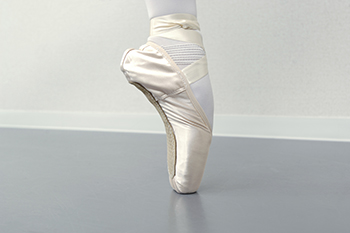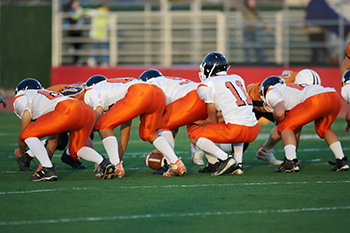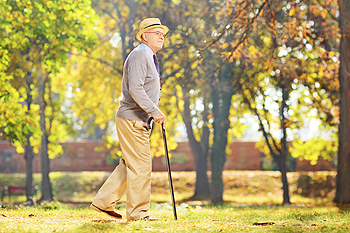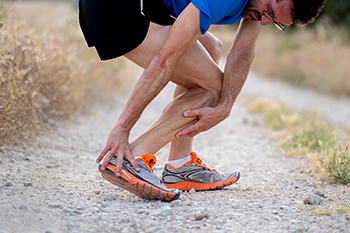Middlefield (860) 349-8500
Wallingford (203) 294-4977
Middlefield (860) 349-8500
Wallingford (203) 294-4977

Bruised toenails, also termed subungual hematomas, are characterized by a darkened nail. This is caused by bleeding under the toenail, which can become painful. Bruised toenails are common among ballet dancers, especially those who dance on pointe. This action places a great deal of force on the toenail and often causes the nail to pull away from the bed. Bruised toenails can also result from dropping a heavy object on the toe. To relieve the pressure of a bruised toenail, it may be necessary to drain the blood underneath the nail. A podiatrist can carry out this procedure by drilling a tiny hole in the nail to release the blood and swabbing it with alcohol to avoid infection. Resting the foot for a few days is recommended to give the nail bed a chance to heal. To avoid future toe bruising, it is wise to keep toenails trimmed short. For help with bruised toenails, it is suggested that you see a podiatrist for safe treatment.
Toe pain can disrupt your daily activities. If you have any concerns, contact Dr. Gordon Fosdick of Affiliated Foot Care Center. Our doctor can provide the care you need to keep you pain-free and on your feet.
What Causes Toe Pain?
Most severe toe pain is caused due to a sports injury, trauma from dropping something heavy on the toe, or bumping into something rigid. Other problems can develop over time for various reasons.
Toe pain can be caused by one or more ailments. The most common include:
When to See a Podiatrist
Diagnosis
In many cases the cause of toe pain is obvious, but in others, a podiatrist may want to use more advanced methods to determine the problem. These can range from simple visual inspections and sensation tests to X-rays and MRI scans. Prior medical history, family medical history, and any recent physical traumatic events will all be taken into consideration for a proper diagnosis.
Treatment
Treatments for toe pain and injuries vary and may include shoe inserts, padding, taping, medicines, injections, and in some cases, surgery. If you believe that you have broken a toe, please see a podiatrist as soon as possible.
If you have any questions please feel free to contact our offices located in Middlefield and Wallingford, CT . We offer the newest diagnostic tools and technology to treat your foot and ankle needs.

The four most common foot injuries reported by runners and athletes are stress fractures, plantar fasciitis, turf toe, and bunions. Plantar fasciitis is caused by microtears and inflammation in the band of tissue, called the plantar fascia, that runs beneath the foot. Stress fractures are tiny, hairline cracks in the bones of the feet, mainly the metatarsals, often a result of overtraining. Because the fractures are so small, detecting them may be difficult. An MRI or a bone scan may be necessary to see them. Turf toe is caused by overextending the joint of the big toe, common to athletes who repeatedly push off from the big toe. This may include football players, dancers, and gymnasts, among others. Bunions, which are largely thought to be genetic in nature, can be further aggravated by wearing improperly fitting shoes. Any of these types of foot pain can increase if a person is overweight, overtrains, or wears improper shoes for their activity. For more information on dealing with foot pain, it is suggested that you consult with a podiatrist for treatment options.
Ankle and foot injuries are common among athletes and in many sports. They can be caused by several problems and may be potentially serious. If you are feeling pain or think you were injured in a sporting event or when exercising, consult with Dr. Gordon Fosdick from Affiliated Foot Care Center. Our doctor will assess your condition and provide you with quality foot and ankle treatment.
Common Injuries
The most common injuries that occur in sporting activities include:
Symptoms
Symptoms vary depending upon the injury and in some cases, there may be no symptoms at all. However, in most cases, some form of symptom is experienced. Pain, aching, burning, bruising, tenderness, tightness or stiffness, sensation loss, difficulty moving, and swelling are the most common symptoms.
Treatment
Just as symptoms vary depending upon the injury, so do treatment options. A common treatment method is known as the RICE method. This method involves rest, applying ice, compression and elevating the afflicted foot or ankle. If the injury appears to be more serious, surgery might be required, such as arthroscopic or reconstructive surgery. Lastly, rehabilitation or therapy might be needed to gain full functionality in the afflicted area. Any discomfort experienced by an athlete must be evaluated by a licensed, reputable medical professional.
If you have any questions, please feel free to contact our offices located in Middlefield and Wallingford, CT . We offer the newest diagnostic and treatment technologies for all your foot care needs.

Falling can be a devastating experience. The feet and ankles can be affected which may result in a fractured or sprained ankle. Severe falls can leave an individual seriously injured and require a hospital stay. Falling often happens in the household, and there are simple fall prevention techniques that can be implemented. These can include improving lighting and removing frayed rugs and clutter. It is beneficial to have grab bars installed in the shower and toilet area, as well as a non-slip bath mat. It is beneficial to have routine physicals and eye examinations to monitor existing medications and eyeglasses. If you would like additional information about ways to prevent falls, it is suggested that you confer with a podiatrist who can provide effective tips.
Preventing falls among the elderly is very important. If you are older and have fallen or fear that you are prone to falling, consult with Dr. Gordon Fosdick from Affiliated Foot Care Center. Our doctor will assess your condition and provide you with quality advice and care.
Every 11 seconds, an elderly American is being treated in an emergency room for a fall related injury. Falls are the leading cause of head and hip injuries for those 65 and older. Due to decreases in strength, balance, senses, and lack of awareness, elderly persons are very susceptible to falling. Thankfully, there are a number of things older persons can do to prevent falls.
How to Prevent Falls
Some effective methods that older persons can do to prevent falls include:
Falling can be a traumatic and embarrassing experience for elderly persons; this can make them less willing to leave the house, and less willing to talk to someone about their fears of falling. Doing such things, however, will increase the likelihood of tripping or losing one’s balance. Knowing the causes of falling and how to prevent them is the best way to mitigate the risk of serious injury.
If you have any questions, please feel free to contact our offices located in Middlefield and Wallingford, CT . We offer the newest diagnostic and treatment technologies for all your foot care needs.

Running is great for staying in shape, and many people enjoy this type of exercise on a regular basis. For that reason, keeping the feet healthy and free of injury is paramount to running pain free. People with flat feet or high arches, or people who overpronate, may be more at risk for typical foot injuries caused by running. Probably the most common foot injury in runners is plantar fasciitis. This inflammation of the plantar fascia, a band of tissue that runs from the toes to the heels, can cause excruciating heel pain. It is likely to be caused by overtraining and is considered a repetitive stress type of injury. Resting the feet, performing suggested exercises, and taking anti-inflammatory medication can help. Metatarsalgia, or pain in the ball of the foot, is another common runner’s injury. It is caused by exerting too much pressure on the long bones of the foot. Also common to runners is a condition called Morton’s neuroma, where the nerves in the foot become entrapped by fibrous tissue. This can cause burning and tingling, numbness, or shooting pain. If you are an avid runner, it is suggested that you consult a podiatrist if you experience these types of injuries.
Exercising your feet regularly with the proper foot wear is a great way to prevent injuries. If you have any concerns about your feet, contact Dr. Gordon Fosdick of Affiliated Foot Care Center. Our doctor will treat your foot and ankle needs.
How to Prevent Running Injuries
Many common running injuries are caused by overuse and overtraining. When the back of the kneecap starts wearing out and starts causing pain in your knee, this is commonly referred to as runner’s knee. Runner’s knee is a decrease in strength in your quadriceps and can occur if you’re not wearing properly fitted or supporting shoes. To prevent runner’s knee, focusing on hip strengthening is a good idea, as well as strengthening your quads to keep the kneecaps aligned.
What Are Some Causes of Running Injuries?
- One cause of a common running injury is called iliotibial band syndrome.
- Plantar fasciitis is also another common injury.
- Stress fractures can occur from overtraining, lack of calcium, or even your running style.
Best Ways to Prevent Running Injuries
- Wear footwear that fits properly and suits your running needs.
- Running shoes are the only protective gear that runners have to safeguard them from injury.
- Make a training schedule. Adding strengthening exercises as well as regular stretching can help keep you strong and limber and can lessen the possibility of injuries.
- Stretching keeps muscles limber; this will help you gain better flexibility.
If you have any questions please feel free to contact our offices located in Middlefield and Wallingford, CT . We offer the newest diagnostic and treatment technologies for all your foot and ankle needs.